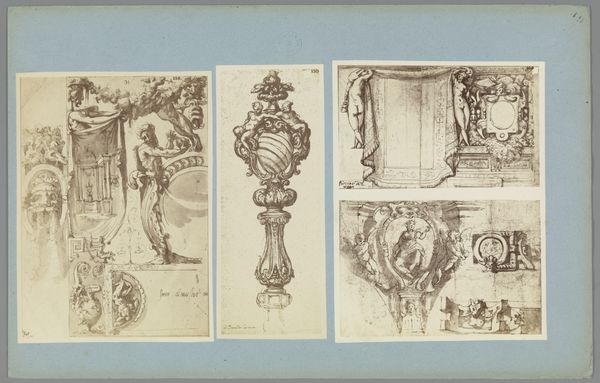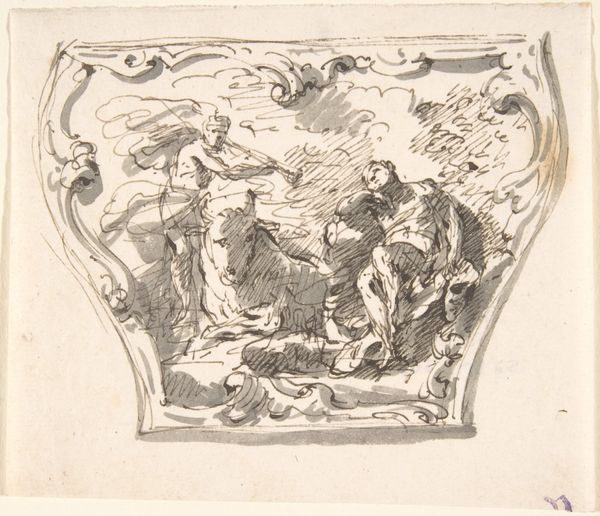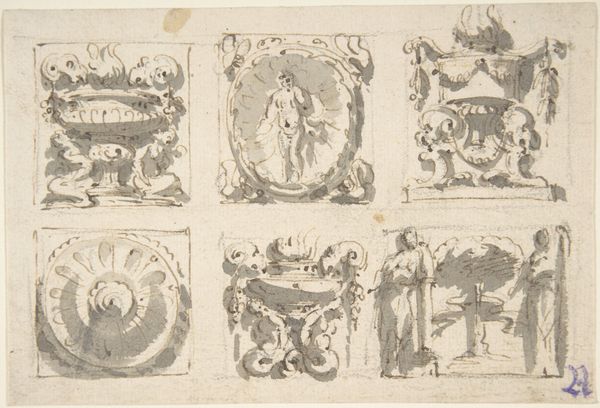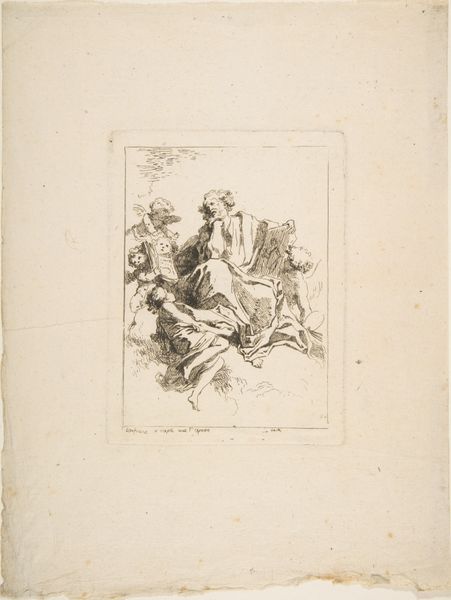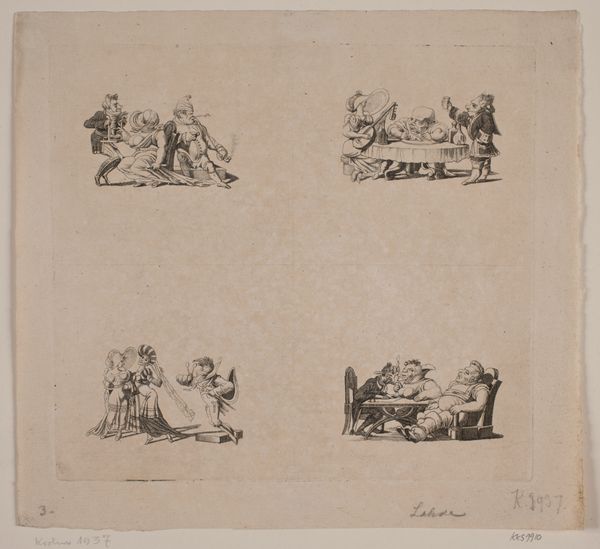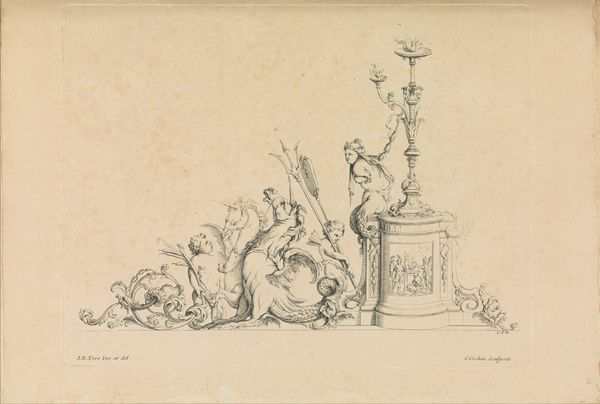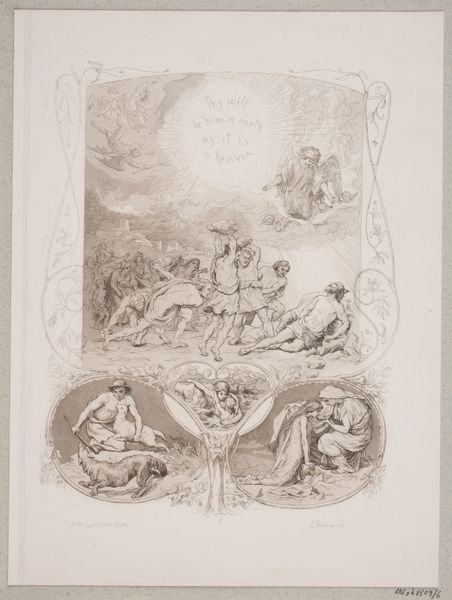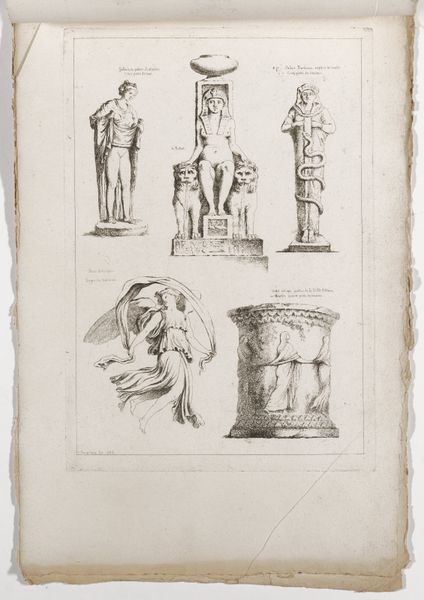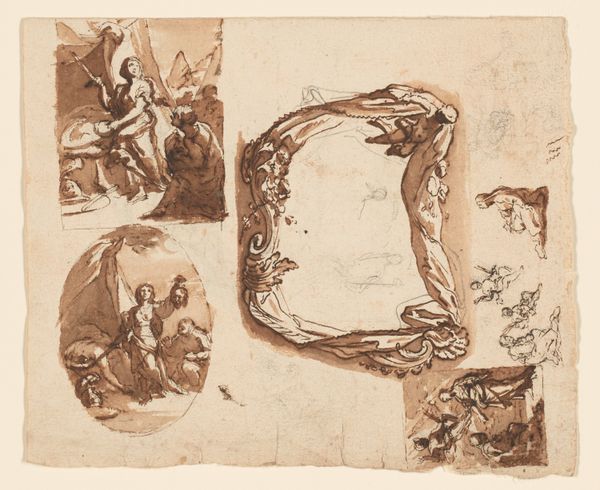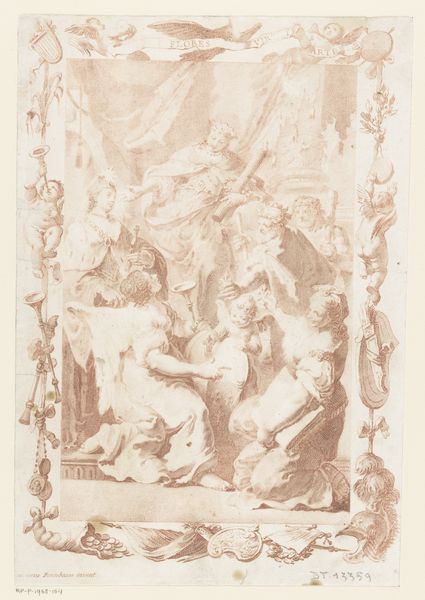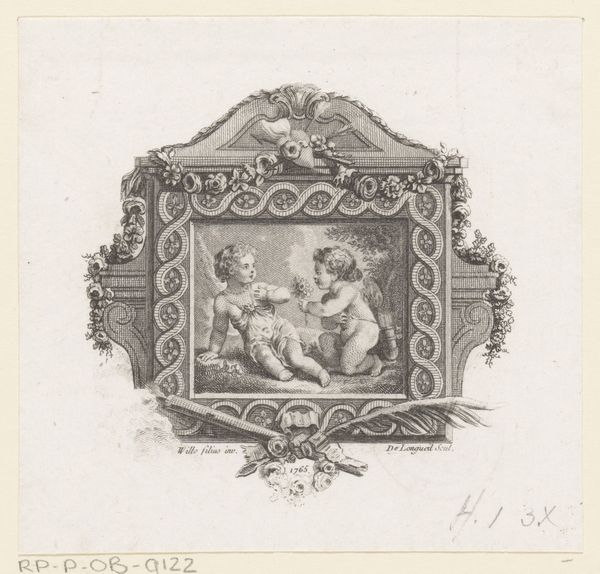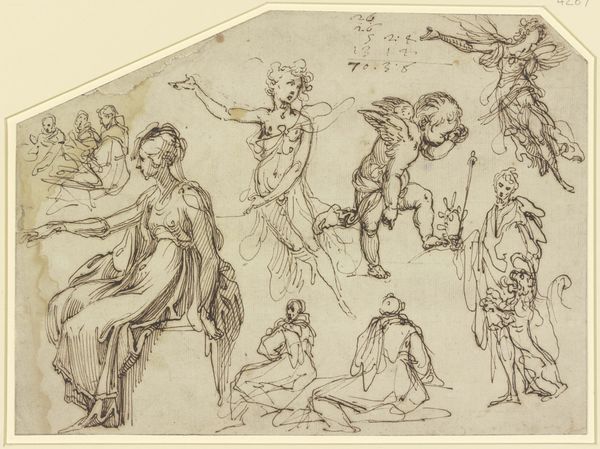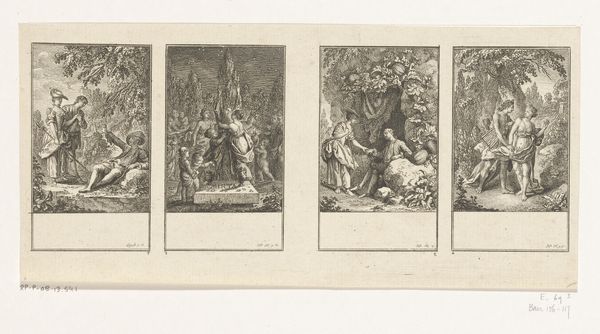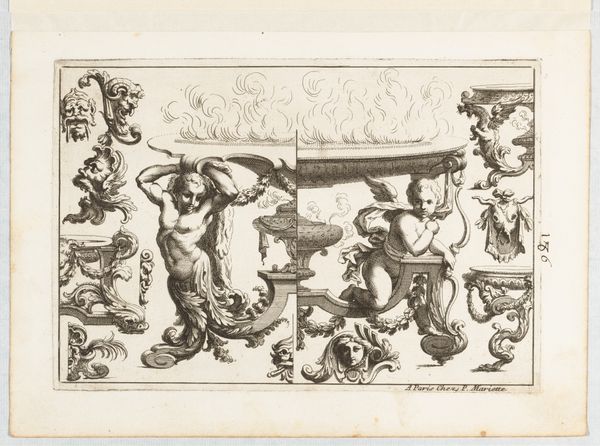
drawing, print, ink, pen
#
drawing
#
ink drawing
#
baroque
# print
#
pen sketch
#
figuration
#
ink
#
pen
#
history-painting
Dimensions: 6-3/4 x 8 in. (17.2 x 20.3 cm)
Copyright: Public Domain
This anonymous drawing shows various designs for parts of a carriage, made with pen and gray ink, and gray wash, probably in the 1700s. Carriages in this period weren’t just a means of transport, but potent symbols of social status, think of them as the status cars of their day. The intricate designs here, featuring classical figures and ornate detailing, reflect the wealth and taste of those who would have commissioned such vehicles. The choice of classical motifs is telling. By referencing ancient Greece and Rome, the carriage's owner would have been associating themselves with the perceived virtues and grandeur of those past civilizations. This was a visual language understood by the elite, a way of communicating power and sophistication. Understanding the social context of art like this requires us to look beyond the aesthetic. By studying historical records, fashion trends, and even carriage-making manuals, we can begin to decode the messages embedded within these designs and gain a deeper insight into the society that produced them.
Comments
No comments
Be the first to comment and join the conversation on the ultimate creative platform.
